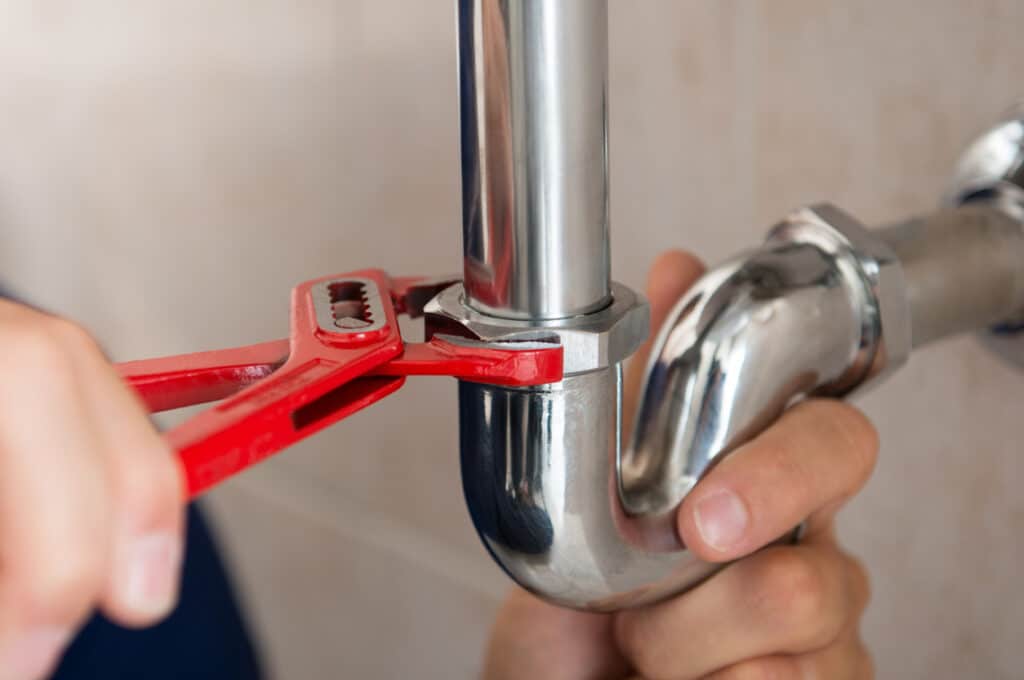
Unfortunately, problems with water are a common part of everyday life. However, many issues can be fixed without needing to call out a professional. An airlock is one of those things that, with a little patience, you can try to fix yourself.
What is an airlock?
An airlock forms when air becomes trapped within your heating or hot water system. The trapped air then stops the water from flowing through your system as it should.
An airlock is a common problem in pipes and prevents hot water from running out of your hot tap. It can also prevent your radiators from warming up properly may also notice that your radiator has remains cold when switched on.
How do I know if I have an airlock?
If you have no hot water or spluttering hot water, you may have an airlock. Another common sign of an airlock is if you notice cold spots on one or more of your radiators.
How do I fix an airlock?
While an airlock may first seem like a serious issue, it’s a fairly simple problem that often doesn’t need the skills of a plumber to fix. So, before you call out a plumber, there are two methods you can try yourself to get rid of the airlock and get water flowing through your taps pipes again.
Method 1
If your sink or bath has both a hot tap and a cold tap, you should try this method first. All you will need for this method is around one metre of hose pipe and some duct tape.
Step 1 – Attach one end of the hose pipe to the outlet of the hot tap and the other to the outlet of the cold tap. You can cut the length of the hose pipe down a bit if necessary.
Step 2 – Make sure each end of the hose pipe is securely fixed to each tap with duct tape.
Step 3 – Turn the hot water tap on.
Step 4 – Turn on the cold water tap. After three to five seconds, turn it back off.
Step 5 – Go to another room in your house that has a hot tap. Turn it on.
Step 6 – Repeat this process up to ten times
While you perform this process, monitor the hot water supply from the other hot tap in your house. If it starts working, you have successfully got rid of the airlock. If it is still not working, there’s another method you can try.
Method 2
Try this method after you have tried the first method. If this one doesn’t work, then it may be time to call out a plumber. The best thing about this method is that you don’t need any extra equipment.
Step 1 – Find your property’s mains water supply and turn it off.
Step 2 – Turn on all the taps in your house. If you have more than one floor, start with the top floor, and then work your way downstairs. Leave all the taps on as you go. You’ll notice that the water quickly stops flowing out of the taps.
Step 3 – Next, it’s time to get rid of the water in your toilets. Flush them until there’s no water left in the bowl or the cistern.
Step 4 – Turn all your taps to an almost-off position. This should allow a small amount of water through when the water supply is turned back on.
Step 5 – Turn your mains supply on again.
Step 6 – Open up your taps to a halfway position.
Step 7 – Open all the taps fully.
Hopefully, your hot water should be flowing again now! This method works by forcing trapped air out of your pipes, opening them up for your hot water again.
Airlocks in central heating system pipes
If you have an airlock in your central heating system, you’ll notice cold spots have formed on your radiator, or you may notice that the top part has gone cold. Sometimes, trapped air blocks the pipes in your radiator too, meaning that the hot water can’t circulate around the system properly.
This problem is a simple fix too – it involves a technique known as “bleeding”:
Step 1: To bleed your radiator, you need to first turn off your heating system.
Step 2: Use your radiator key to turn the little valve – this will usually be at the top of the radiator. Put a container underneath it as it will leak dirty water.
Step 3: The radiator will start to hiss as you turn the key. This is the sound of trapped air escaping.
Step 4: Repeat this process for all other cold radiators.
Step 5: Check your boiler’s pressure gauge is above 1.5.
If this process hasn’t worked, you could have another problem, if so please feel for to get in contact with an expert plumber.
